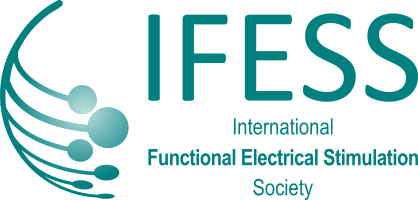Combining non-invasive FES and spinal cord stimulation (niSCS): Why and how to apply in pediatric clinics.
Presenters: Gad Alon (PhD, PT) [1] & Gerti Motavalli (PT, MPT) [2]
[1] Associate Professor Emeritus, School of Medicine, University of Maryland, Baltimore, MD, USA; [2] Pediatric Clinician, 861785, N Hampton Club Way, Fernandina Beach, FL 32034, USA.
Workshop description: Children whose spinal cord or brain were damaged, endure life-long multitude of impairments and functional deficits that impact the sensory-motor system as well as internal organs. Damage to the spinal cord can be caused by injury (SCI) or spina bifida (SB). Damage to the brain is likewise caused by injury (TBI) or cerebral palsy (CP). Specifically, the damage can occur at any level of the spinal column, or any region of the brain. The clinical consequence is sensory-motor paralysis/paresis from, and below the damaged area and may impair the functions of the entire body. Clinical presentation can be complete or incomplete paralysis, and the severity could be bilateral, unilateral or combination.

Robust peer-reviewed clinical data support the premise that different approaches of non-invasive electrical stimulation can be used therapeutically as standard of care for children seeking rehabilitation. Whereas functional electrical stimulation (FES) is commonly offered to children to manage SCI or CP, other treatment options are rarely used in practice. Recent exploration of non-invasive neuromodulation now provides strong evidence that non-invasive spinal cord stimulation (niSCS) and functional electrical stimulation (FES) yield clinically meaningful restoration of sensory, motor, and internal organ functions.
This workshop will offer a review of the latest findings utilizing niSCS and FES applied to children with a history of CP or spina bifida (SB). Following a review of the major impairments and functional deficits these patients endure, the presenters will review the different options of niSCS and FES technologies, and the mechanism by which they may help to resolve the impairments and functional deficits. The presentation will include video-based examples of how niSCS and FES are being utilized in current research-based protocols and clinical practice. Finally, there will be a “hand-on” demonstration on workshop participants who wish to learn how to apply it to patients with damage to the spinal cord.

